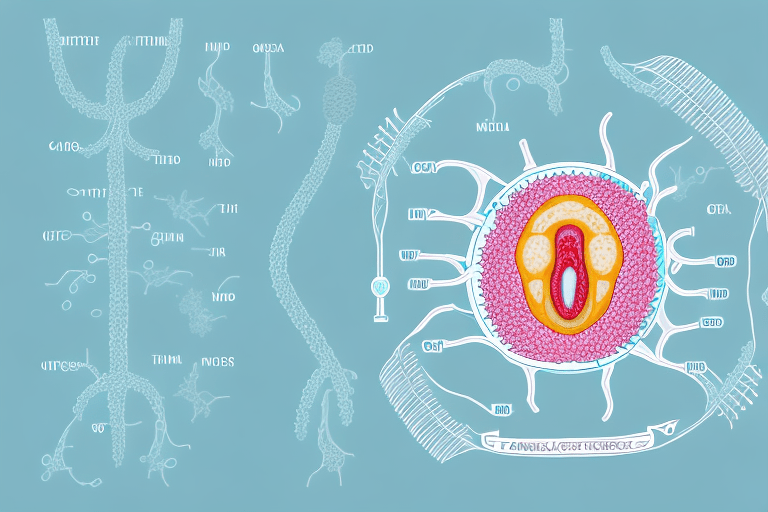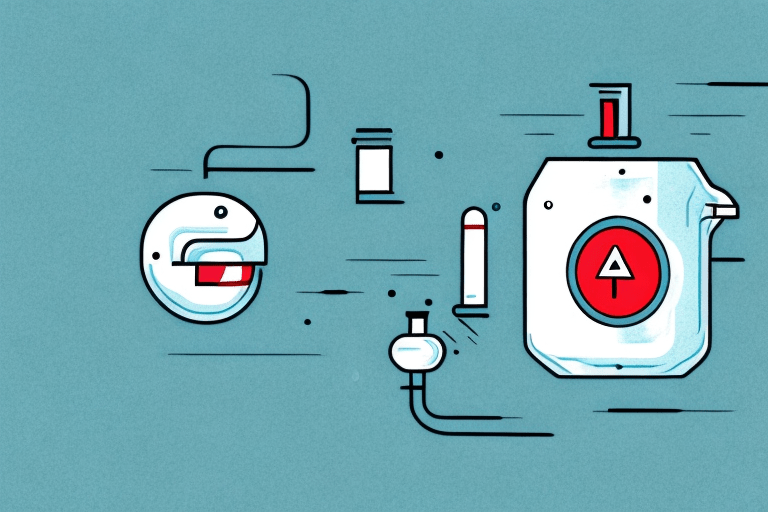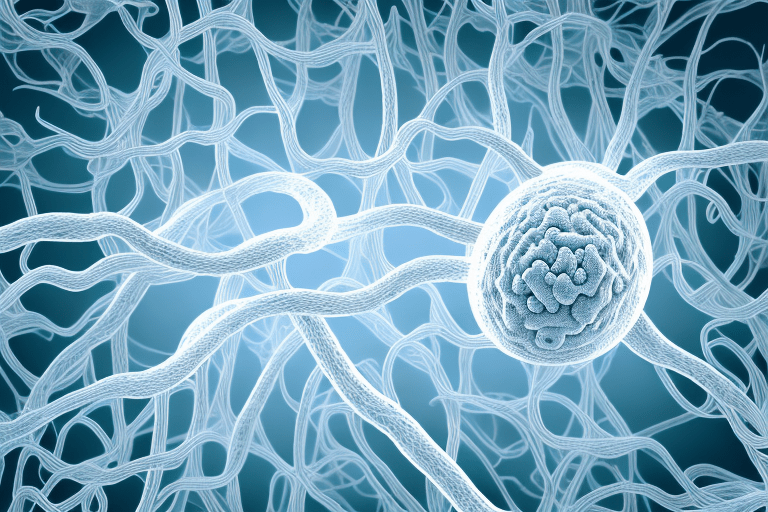Vaginal Candidiasis, also known as vaginal thrush, is a common fungal infection that affects many women around the world. It is caused by an overgrowth of a yeast called Candida albicans, which normally resides in small amounts in the vagina. In this article, we will explore the causes, symptoms, and treatment options for vaginal candidiasis, as well as prevention strategies and coping mechanisms for those living with this condition.
What is Vaginal Candidiasis?
Vaginal candidiasis is a type of yeast infection that occurs when the balance of bacteria and yeast in the vagina is disrupted. This disruption allows for the overgrowth of Candida albicans, leading to symptoms such as itching, burning, and abnormal vaginal discharge.
Defining Vaginal Candidiasis
The term "vaginal candidiasis" refers specifically to an infection caused by the Candida fungus. It is different from other types of vaginitis, such as bacterial vaginosis or trichomoniasis, which are caused by different microorganisms.
Prevalence and Impact on Women's Health
Vaginal candidiasis is a widespread health concern, affecting women of all ages. It is estimated that around 75% of women will experience at least one episode of vaginal candidiasis during their lifetime. The impact of this condition on women's health can be significant, causing physical discomfort, emotional distress, and disruption to daily activities.
While vaginal candidiasis is a common issue, it is important to note that certain factors can increase the risk of developing this infection. For instance, women who have weakened immune systems, such as those with HIV/AIDS or undergoing chemotherapy, are more susceptible to vaginal candidiasis. Additionally, the use of certain medications, such as antibiotics or corticosteroids, can disrupt the natural balance of bacteria and yeast in the vagina, leading to an overgrowth of Candida albicans.
Furthermore, hormonal changes can also play a role in the development of vaginal candidiasis. Women who are pregnant or going through menopause may experience fluctuations in hormone levels, which can create an environment that is more favorable for the growth of yeast. It is worth noting that while hormonal changes can contribute to the development of vaginal candidiasis, this condition is not considered a sexually transmitted infection.
The Causes of Vaginal Candidiasis
Several factors can contribute to the development of vaginal candidiasis. These include biological factors and environmental triggers.
Biological Factors:
Changes in the vaginal environment, such as hormonal fluctuations during the menstrual cycle or pregnancy, can create conditions that favor the growth of Candida albicans. When estrogen levels rise, it can lead to an increase in glycogen production in the vaginal epithelial cells. This glycogen serves as a food source for Candida albicans, allowing it to thrive and multiply. Similarly, during pregnancy, hormonal changes can alter the pH balance of the vagina, making it more susceptible to Candida overgrowth.
In addition to hormonal influences, certain underlying medical conditions can increase the risk of developing vaginal candidiasis. Individuals with diabetes, for example, may have elevated blood sugar levels, providing an ideal environment for Candida albicans to grow. Weakened immune systems, whether due to conditions like HIV/AIDS or the use of immunosuppressive medications, can also make individuals more susceptible to fungal infections, including vaginal candidiasis.
Environmental Triggers:
External factors can also play a role in the development of vaginal candidiasis. The use of antibiotics, for instance, can disrupt the delicate balance of bacteria and yeast in the vagina. Antibiotics are designed to kill harmful bacteria, but in doing so, they can also eliminate the beneficial bacteria that help keep Candida albicans in check. This disruption allows Candida to flourish and cause an infection.
Another environmental trigger is douching, which involves rinsing the vagina with water or other solutions. While douching is often done for hygiene purposes, it can actually do more harm than good. Douching can disturb the natural pH balance of the vagina, making it more susceptible to Candida overgrowth. Additionally, wearing tight-fitting clothing made from synthetic materials can create a warm and moist environment, providing an ideal breeding ground for Candida albicans.
Understanding the various causes of vaginal candidiasis is crucial in both prevention and treatment. By addressing the biological factors and avoiding environmental triggers, individuals can reduce their risk of developing this common fungal infection.
Recognizing the Symptoms of Vaginal Candidiasis
Early detection of vaginal candidiasis is crucial for prompt treatment. Understanding the progression of symptoms can help women identify the infection before it becomes more severe.
When it comes to vaginal candidiasis, being aware of the early signs is essential. The sooner you recognize the symptoms, the sooner you can seek appropriate treatment. The early symptoms of vaginal candidiasis can include itching, burning, and swelling of the vulva. These sensations can be quite uncomfortable and may cause distress. Additionally, some women may also experience redness or soreness in the vaginal area, which can further contribute to the discomfort.
However, it is important to note that if left untreated, vaginal candidiasis can progress and lead to more severe symptoms. As the infection worsens, you may notice a thick, white, cottage cheese-like discharge. This discharge can be quite alarming and may have a distinct odor. It is crucial to seek medical attention if you experience this symptom, as it is a clear indication that the infection has advanced.
In addition to the discharge, vaginal candidiasis can also cause pain during sexual intercourse. This can be a significant source of discomfort and may affect your overall sexual well-being. Furthermore, you may experience discomfort while urinating, which can be a result of the inflammation and irritation caused by the infection.
Diagnostic Procedures for Vaginal Candidiasis
Several diagnostic procedures can be used to confirm the presence of vaginal candidiasis and rule out other possible causes of symptoms.
Medical History and Physical Examination
During a medical evaluation, healthcare providers will ask about symptoms and medical history. They will also perform a physical examination to assess the appearance of the vagina and surrounding areas, looking for signs of inflammation or discharge.
During the medical history portion of the evaluation, healthcare providers will inquire about the duration and frequency of symptoms, such as itching, burning, or abnormal discharge. They will also ask about any recent antibiotic use, as this can increase the risk of developing vaginal candidiasis.
When conducting the physical examination, healthcare providers will use a speculum to gently open the vagina and examine the vaginal walls and cervix. They will look for any redness, swelling, or the presence of a thick, white, cottage cheese-like discharge, which are all indicative of vaginal candidiasis.
Laboratory Tests
In some cases, healthcare providers may collect a sample of vaginal discharge for laboratory analysis. This can involve microscopic examination, where the discharge is placed on a slide and examined under a microscope to identify the presence of yeast cells or hyphae, which are long, branching filaments that are characteristic of Candida species.
Additionally, healthcare providers may choose to culture the sample, which involves placing the discharge on a special medium that promotes the growth of yeast. This allows for the identification of the specific type of yeast present, which can help guide treatment decisions.
In certain situations, healthcare providers may perform other tests to rule out other possible infections that can cause similar symptoms. These tests may include screening for sexually transmitted infections or performing a pH test to assess the acidity level of the vagina, as vaginal candidiasis often results in a more acidic environment.
Treatment Options for Vaginal Candidiasis
Fortunately, several treatment options are available to effectively manage vaginal candidiasis and alleviate symptoms.
When it comes to treating vaginal candidiasis, there are a variety of options to choose from. One commonly used approach for mild cases is over-the-counter antifungal medications. These can come in the form of creams, suppositories, or tablets, and are easily accessible at your local pharmacy. These over-the-counter treatments typically contain active ingredients such as miconazole or clotrimazole, which work by reducing the overgrowth of Candida and relieving uncomfortable symptoms.
For those dealing with more severe or recurrent cases of vaginal candidiasis, a visit to a healthcare provider may be necessary. In such instances, prescription treatments may be recommended. These prescription antifungal medications, such as fluconazole, are taken orally and can provide more potent and longer-lasting relief from symptoms. They are often prescribed when over-the-counter treatments have proven ineffective or when the infection persists despite initial treatment.
It is important to note that while these treatments can effectively manage vaginal candidiasis, they do not address the underlying factors that may contribute to the development of the infection. Factors such as hormonal changes, weakened immune system, or certain medications can increase the risk of candidiasis. Therefore, it is crucial to discuss any recurring or persistent symptoms with a healthcare provider to identify and address any underlying causes.
Prevention Strategies for Vaginal Candidiasis
Taking preventive measures can help reduce the risk of developing vaginal candidiasis or experiencing recurrent infections.
When it comes to maintaining vaginal health, there are a few additional lifestyle changes that can make a significant difference. In addition to avoiding scented soaps or hygiene products in the genital area, it is also important to pay attention to what we wear. Opting for breathable cotton underwear can help promote air circulation and prevent moisture buildup, creating an environment that is less favorable for the growth of yeast. Furthermore, practicing good hygiene habits, such as wiping from front to back after using the toilet and avoiding excessive douching, can help maintain a healthy balance of bacteria and yeast in the vagina.
Lifestyle Changes
Simple lifestyle changes, such as avoiding the use of scented soaps or hygiene products in the genital area, wearing breathable cotton underwear, and practicing good hygiene habits, can help maintain a healthy balance of bacteria and yeast in the vagina.
Additionally, incorporating probiotics into your daily routine may also be beneficial in preventing vaginal candidiasis. Probiotics are live bacteria and yeasts that are good for your health, especially your digestive system. They can be found in certain foods, such as yogurt, or taken as supplements. These friendly bacteria can help restore and maintain the natural balance of microorganisms in the vagina, reducing the risk of yeast overgrowth.
Medical Interventions
For women with recurring vaginal candidiasis, healthcare providers may recommend ongoing maintenance therapy, involving the use of antifungal medications on a regular basis to prevent future infections. This can be especially beneficial for women with underlying medical conditions or those who experience frequent episodes of vaginal candidiasis.
It is important to consult with a healthcare professional to determine the most appropriate treatment plan for your specific situation. They can provide guidance on the duration and frequency of antifungal medication use, as well as monitor your progress to ensure the prevention strategies are effective in reducing the occurrence of vaginal candidiasis.
Living with Vaginal Candidiasis
Coping with vaginal candidiasis can be challenging, both physically and emotionally. However, there are several coping mechanisms and support options available.
Living with vaginal candidiasis can be a rollercoaster ride of symptoms and discomfort. From the itching and burning sensations to the emotional toll it takes, it's important to find effective coping mechanisms to navigate through this condition. One coping mechanism is practicing good self-care. This includes maintaining proper hygiene by washing the genital area with mild, unscented soap and water. It's also important to use gentle cleansing products that won't further irritate the delicate skin. Avoiding irritants such as douches, scented tampons, and tight-fitting underwear can also help manage symptoms and reduce discomfort.
Emotional support is equally important when dealing with vaginal candidiasis. Seeking support from loved ones or joining support groups can provide a sense of community and understanding. Sharing experiences and advice with others who are going through similar challenges can be incredibly empowering. It's reassuring to know that you're not alone in this journey and that there are others who can offer guidance and support.
Support and Resources
There are many resources available to help women navigate the challenges of living with vaginal candidiasis. Online forums dedicated to candidiasis provide a platform for women to connect and share their experiences. These forums often offer a wealth of information, advice, and support from individuals who have firsthand knowledge of the condition. Educational websites can also be valuable sources of information, providing in-depth articles and guides on managing and treating vaginal candidiasis.
Healthcare professionals play a crucial role in supporting women with vaginal candidiasis. They can offer guidance on treatment options, provide accurate information about the condition, and address any concerns or questions that may arise. Building a strong relationship with a healthcare professional who specializes in women's health can be immensely beneficial in managing and treating vaginal candidiasis.
By understanding the causes, symptoms, and treatment options for vaginal candidiasis, women can take control of their health and seek appropriate care. With proper management and support, women living with vaginal candidiasis can lead fulfilling and comfortable lives.







